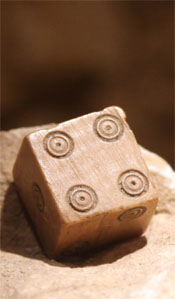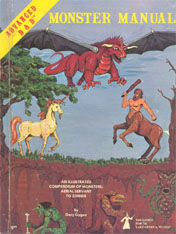Go to Part 1
 ADAPTATIONS
ADAPTATIONS
There are a number of simple modifications and adaptations of the basic concept found in this system. The Hit Locations system described earlier is one possibility. This section of the article will try to point out a few more of these – even if complete mechanics for each of the adaptations are occasionally left up to the GM’s discretion, creativity, and personal needs.
RESOLUTION METHODS: Many games have different resolution systems depending on what type of action is being attempted or the circumstances under which the attempt is made. The most obvious and common of these is the distinction made between “normal” skill resolution and “combat” skill resolution.
Even when the two systems of resolution are practically or entirely identical in game terms the descriptive needs of the GM may alter drastically between, for example, combat and non-combat situations. The simplest adaptation of the systems in this article is to simply use different qualities at different times.
For example, a GM may feel that in non-combat situations he will be most aided by the qualities of Time Required, Outside Influences, and Finesse. On the other hand he might find Skill, Style, and Luck to be more useful for combat situations.
This modification is as easy as simply using those qualities at those times in which you will feel they will be most useful.
DAMAGE: Many systems on the market today continue to follow the example of D&D and use a separate dice roll to determine the damage done by a weapon. In several cases multiple dice are used and it therefore becomes easy to create a list of “damage qualities” which would help you describe not only the severity of damage, but the type of damage done.
CHARACTER SCHTICKS: Not all characters are the same – and in several genres (particularly the pulp and superhero ones) each “type” of character is possessed of a very distinct, personal style. Superman, for example, behaves and operates in one manner, while Batman behaves and operates in a quite different manner. This system can be easily adapted to such situations.
Instead of having one set of universal qualities which all characters use, let each player decide on a “character schtick” – a set of qualities which he feels would best result in the type of descriptions he feel would be appropriate to his character. The GM, of course, would set schticks for NPCs as he so desired.
For example, in a game set in 1920s Chicago, your typical mob thug might have the qualities of Power and Luck. Al Capone, on the other hand, would have Style and Finesse. Elliot Ness might want Skill and Luck.
CHARACTER GENERATION: Although this is no longer true of many systems, there are still several systems out there that use dice for parts of or the entire character creation process. If you wanted to give even greater control to the dice during character creation it would certainly be a relatively easy task to create a list of qualities for any attributes or statistics which you roll for during character creation.
For example, when rolling 3d6 for Strength in AD&D you could have three different qualities: Muscle Mass, Power, and Physique. Although these would have little or no effect on actual gameplay, they would – just like the qualities for skill resolution described above – be hints as to how your character is strong, not just how strong he is.
DICE POOLS: Dice pools, used in many popular games such as West End Games’ Star Wars and the World of Darkness games from White Wolf Games, are a mechanic under which – instead of raising a number you roll against as you increase your character’s skill – you increase the number of dice which are rolled against a stationary target number as your character’s skill increases. Clearly the basic system described in this article does not work with such systems: you can’t assign a set of qualities to the dice if the number of dice is constantly in flux depending on what is being resolved. There are three ways, however, to alter this system to make it usable in games which employ dice pools.
First, and simplest, is to simply choose two qualities. Have two specially marked dice – each representing one of the two qualities – and make sure these are included in any role. On any die roll in which only one die is involved, ignore the qualities.
Second, you can expand this concept by having a laundry list of qualities. The first might be Skill, the second Style, the third Finesse, the fourth Outside Influences, and the fifth Power. If three dice were rolled you would use the Skill, Style, and Finesse dice. If five were rolled you would use Skill, Style, Finesse, Outside Influences, and Power.
Finally, you can create a “quality pool” from which players may select the qualities they want. Combining the second option above with variable choice you can either limit the choice to pre-campaign (like Character Schticks), or let the players decide on each roll which qualities they want. The only problem with this latter potential is that it can sometimes bog down the session as players deliberate over which qualities to pick (“Let’s see, do I want power and finesse – or finesse and style – or…?”).
CONCLUSION
The system is incredibly versatile and very effective as a tool that almost any Gamemaster can use effectively as an aid to his game. That being said, it is important to realize that this tool is not for everyone. Those who have no difficulty describing the results of action resolution will have no use for this system. There will be those who simply don’t find the system to be particularly helpful. Finally, I have found no way of adapting this system or some variant of it to resolution systems involving only a single die.
However, for those GMs who can use this system, and who find it useful, I think that it can be safely said that you will find your campaigns improved, and not lessened, for its inclusion so long as you remember that this is merely a system of guidelines, and not absolutes.
Reflections on “Dice of Destiny”













